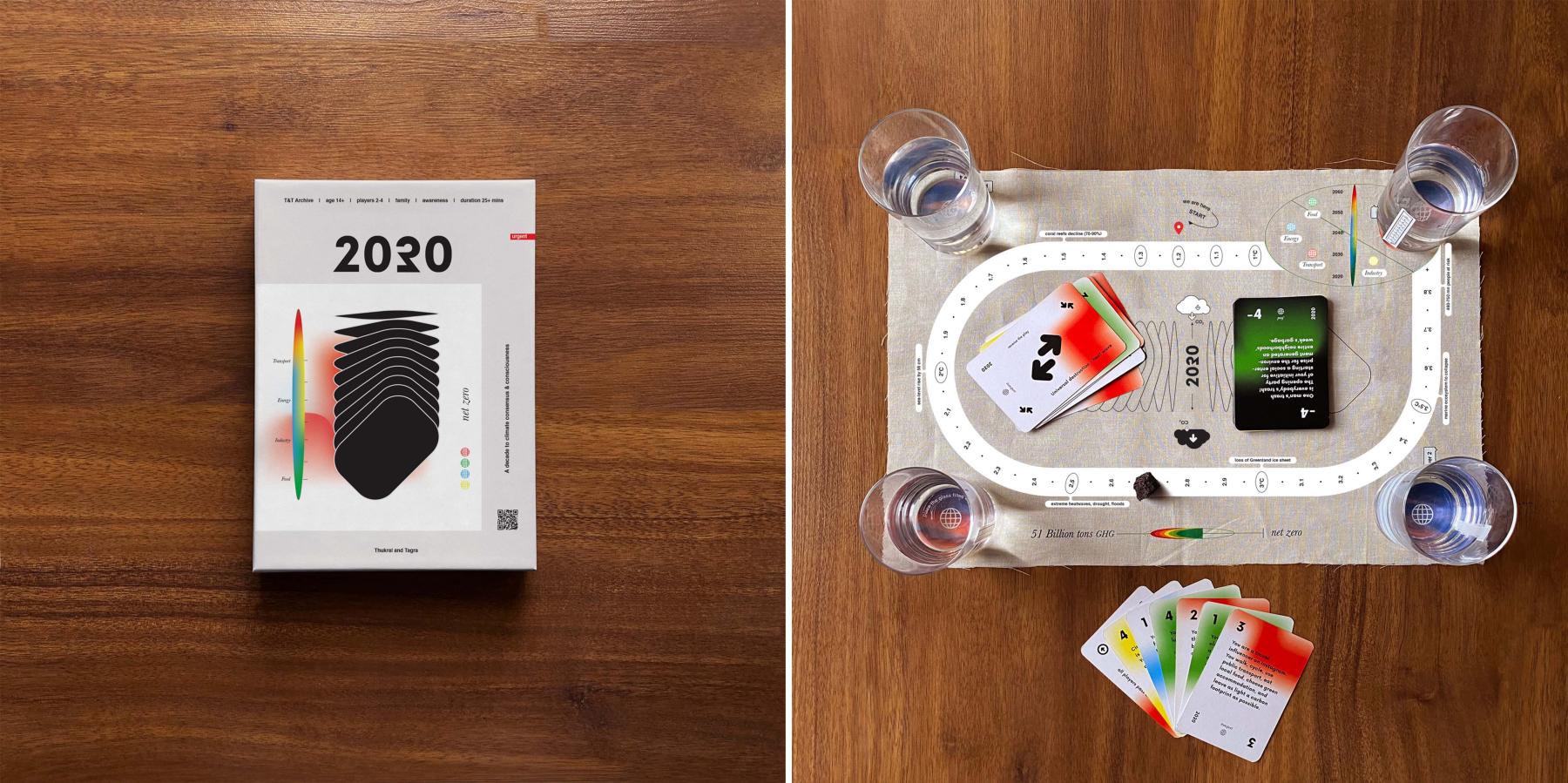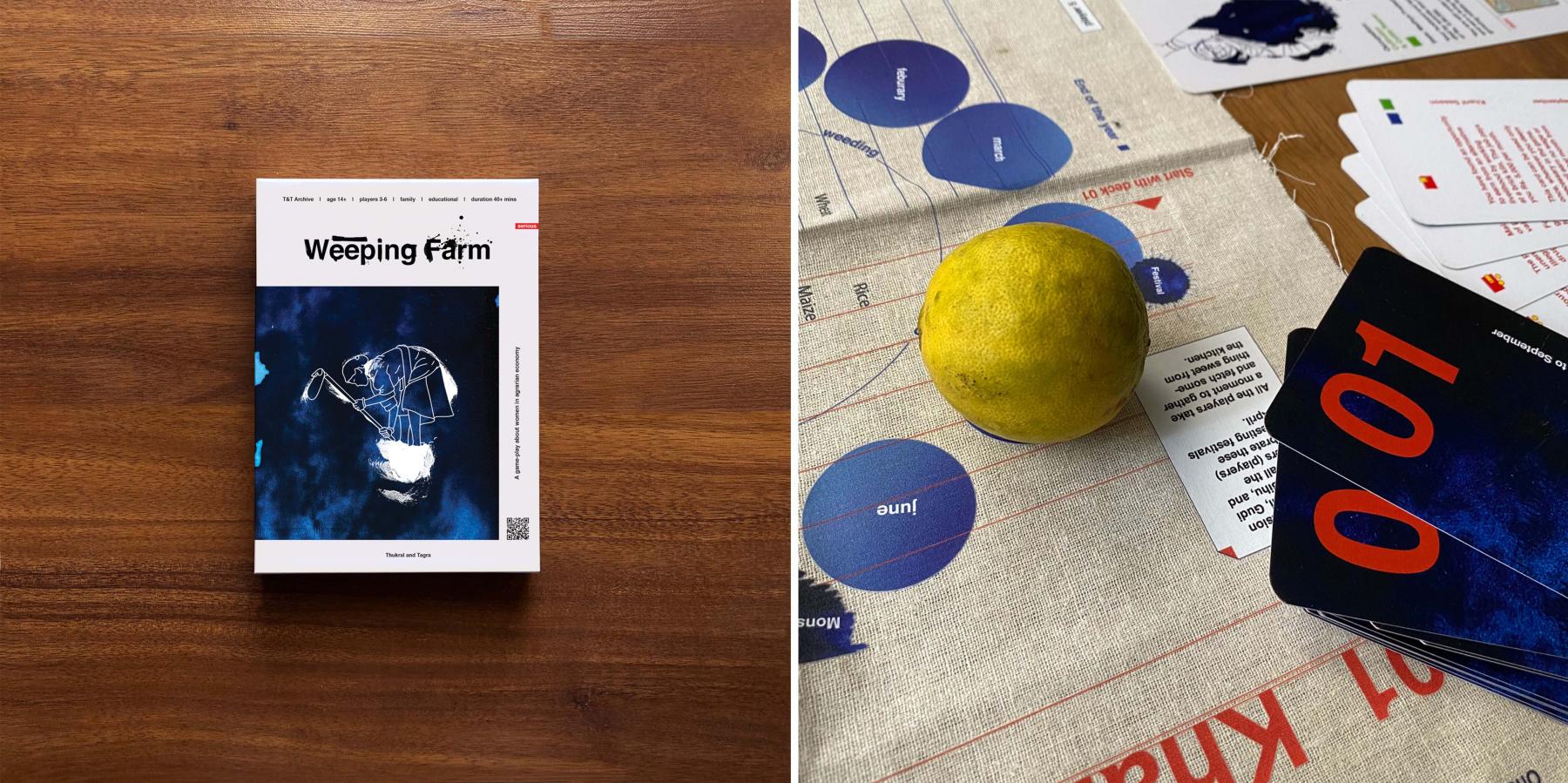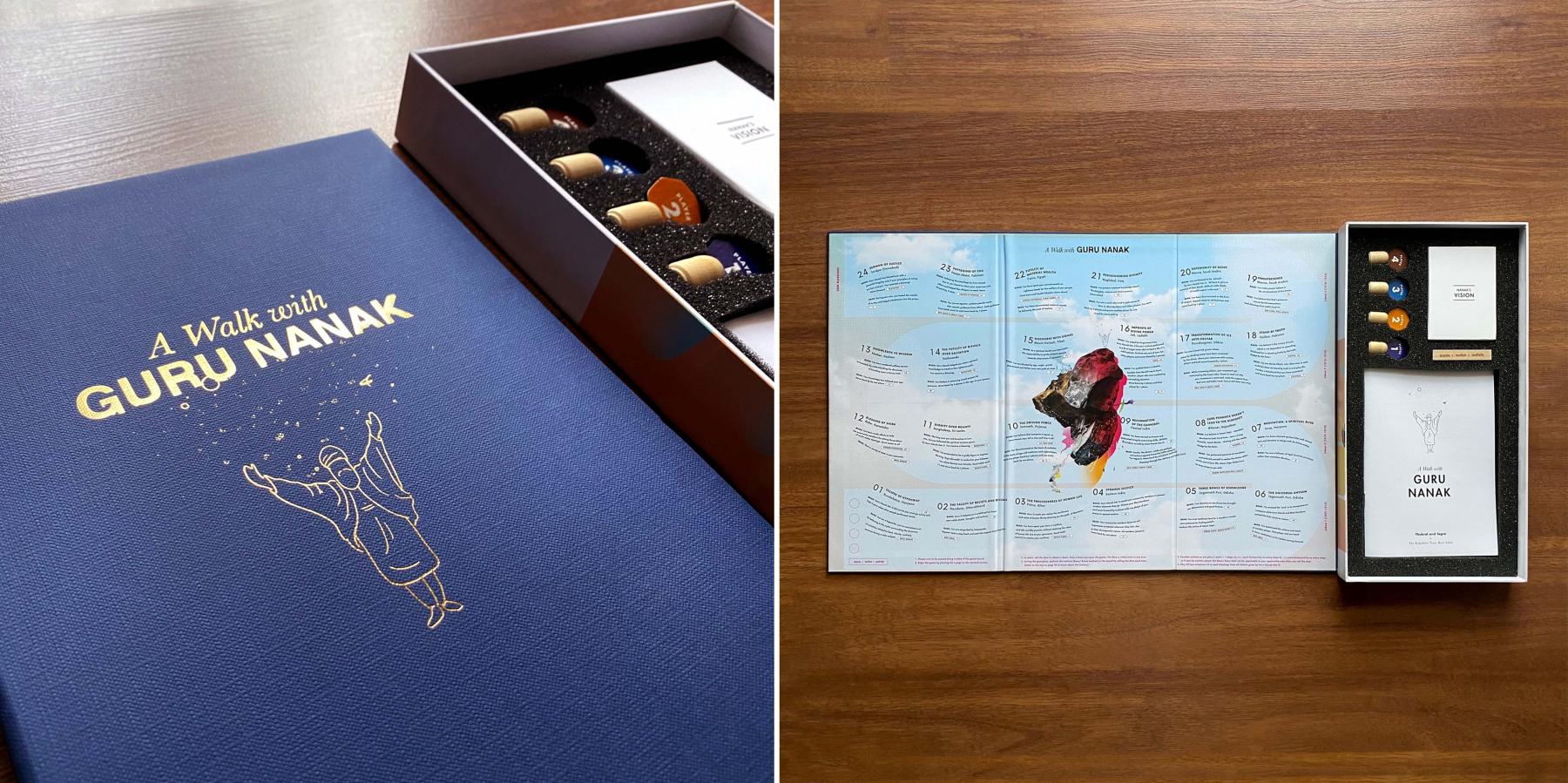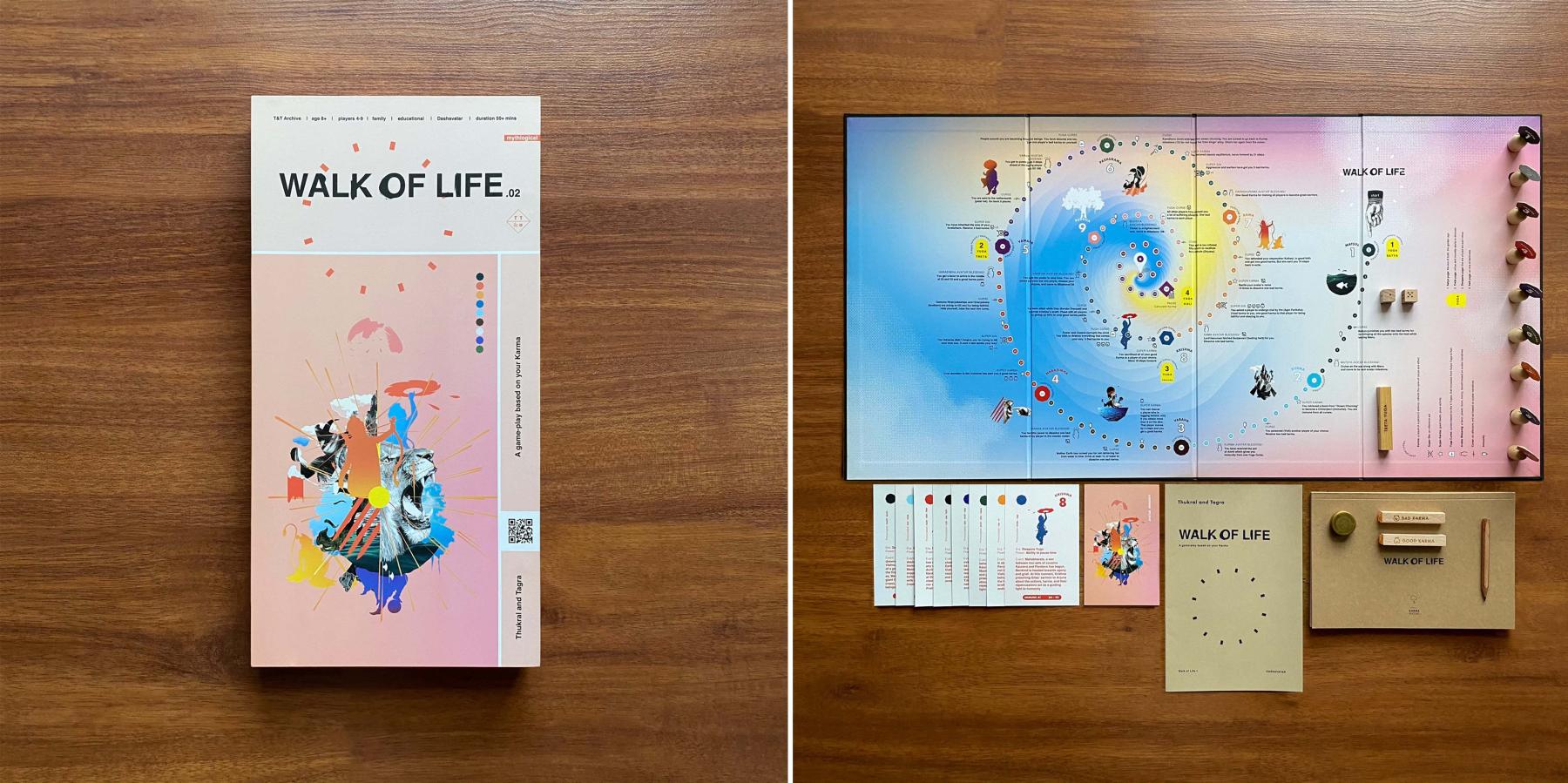At Play: In Conversation with Jiten Thukral
For nearly two decades, Jiten Thukral and Sumir Tagra have been working with a wide range of media and novel modes of public engagement to reflect on various socio-political concerns. Their project and Archive, launched at the 2022 India Art Fair, comprises a compendium of books and games handcrafted using eco-friendly materials. The work allows individuals to introspect on nature, climate change, the agrarian crisis, debt, suicide, rejection and shrinking employment. It includes, for instance, 2030 Net Zero (2022) developed as a game exploring the tonnes of greenhouse gases annually released into the atmosphere. The game invites participants to bring these gasses down to “net zero”. There is also Weeping Farm (2022), conceived both as a book and as gameplay, which focuses on issues of gender inequality, stagnating productivity, rampant unemployment, food insecurity, privatisation, escalating indebtedness, and climate change faced by farmers.

2030 Net Zero (2022)
In this interview, Jiten Thukral talks about archives, how they bring about an appreciation for the process of making art and the importance of roleplay in art-based games to build empathy.
SC: Could you trace the beginning of some of the ideas that led to the creation of and Archive (aA)?
JT: The book works and game editions at the Thukral and Tagra Archive (T&Ta) are a window into our decade-long studio practice, allowing the reader to appreciate the art-making process. Publications hail from our family history of print shops and art-making in general, where the books provide access to the experience of visual poetry, monographs, research, and proposals. Gameplays as a tool of art pedagogy and social awareness enlarge the scope of art practice and deepen its relevance to the current systems of public engagement. At large, aA is a space that offers a visual marathon that disseminates knowledge as therapy in the form of book works, prints, objects, and games.

L: Low-Tech Family Vacations (2010)
R: Q (Punjabi) (2013)
SC: Why call it and Archive?
JT: The “and” in aA is a nod to the power of interdependence, sharing, thinking together and co-development. It places its faith in thought forms that emerge from conversations, dialogue, and states of togetherness. To put it simply, it’s the artists and their archives.

Weeping Farm (2022)
SC: What are some of the key elements that make the project? What kind of work did they involve? How long was it in the making?
JT: Our studio researched extensively for the past decade at the primary level to develop an understanding of the subject matter. Our team meticulously strives for in-depth research, which may vary by months or sometimes years. Since the know-how is sourced first-hand, the players can relate to the subject matter on many levels. Our efforts throughout the process of making game editions and publications have been conscious of the kind of material we use, the way we source it, research processes, etc.

A Walk with Guru Nanak (2021)
SC: Could you tell us a little about the importance of game-play in your artistic practice? What are the most exciting ways in which you have employed it in your work?
JT: Human beings love to play. The gameplay leaves an impression and leads to higher retention. The gameplays are capable of representing unions and reunions as a collective effort to address something that is impactful and compelling. I think art-based games allow the audience to experience a unique way to engage with the artwork. Artist-made games are just like paintings or sculptures, where the audience can interact, build knowledge and develop an understanding of the urgency invoked. The audience’s roleplay enables them to build empathy, comprehend the issue/s, and create strategies to engage with their peers. The games are conversation starters and leave people with questions and thoughts that may not have been perceived in everyday life.

Walk of Life (2021)
SC: On your website, you call aA a malleable and mutating framework. In what ways has it evolved since you first conceived it? Are there specific ways in which you imagine it to change in the future?
JT: Change is a constant and ever-evolving. Time is extremely powerful; the changes it brings are hard to put into measure but only work as an adaptation of something new. As […] a mode of resistance, solidarity, and an act of coming together, we continue to develop further, focusing on various languages, increasing accessibility and reaching the focus groups. The year ahead looks very busy, filled with working around ideas of broadening audiences and learning from our experiences.

L: Longing for Tomorrow (2012)
R: The Bridge is a Spine (2016)
To read more about digital art, click here and here.
All images by Thukral and Tagra, courtesy of the Thukral and Tagra Studio.




